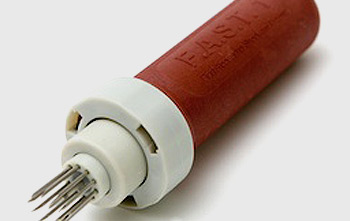
Cruelty In Maternity Wards
In 1958 the Ladies Home Journal published a disturbing expose called "Cruelty in Maternity Wards." In a series of letters, American nurses provided direct accounts of laboring women being left alone for hours, strapped down to beds, crying "violently" and involuntarily writhing against the restraints. At that time, fathers and other family members were not allowed in the birthing rooms to bear witness. Under heavy sedation, the memories of the mothers themselves were fuzzy.
The American public was horrified by these descriptions. Pregnant women wanted their voices back. They wanted the capacity to consent. They wanted more control.
By the 1960s, a newer technology – epidural anesthesia – offered an appealing alternative. Administered at the level of the spine, epidurals effectively bypass the brain, allowing mothers to stay awake and alert during labor, to relay their symptoms and participate in care decisions. But they also require a different trade-off. The medicine spreads out to block all nerves that relay and receive signals to and from the pelvis and thighs. These nerves mediate sensation but also control all of the key muscles in that region, from the bladder to the quadriceps.

Women with epidurals are unable to urinate on their own. A catheter must be placed to help them. Otherwise, their bladder will simply distend like a balloon. They are also unable to effectively move their legs and must remain in bed, usually for many hours. Epidurals require more intensive monitoring, a multitude of wires that act as tethers. And by removing pain as a barrier, they bring the potential for more interventions—the same epidurals used for spontaneous vaginal deliveries can be sufficiently dosed for a broad range of procedures, including cesarean sections.
Medical Xpress

